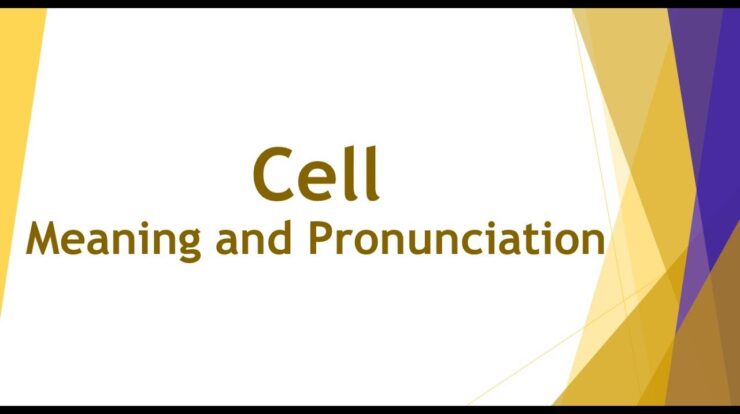
Cell language meaning – Cell language, the intricate system of molecular signals that govern cellular communication, plays a fundamental role in coordinating the activities of living organisms. This fascinating field of study delves into the mechanisms by which cells exchange information, enabling them to maintain tissue homeostasis, regulate biological processes, and orchestrate complex developmental programs.
The molecular mechanisms underlying cell language involve a complex interplay of receptors, ligands, and signaling pathways. These components work in concert to transmit signals across cell membranes, triggering specific responses within target cells. Intercellular communication, facilitated by cell language, is essential for coordinating cellular activities, ensuring the proper functioning of tissues and organs.
Cell Language: Definition and Concept

Cell language refers to the system of communication that allows cells to interact and exchange information. It involves the transmission of chemical signals between cells, enabling them to coordinate their activities, maintain tissue homeostasis, and respond to external stimuli. Cell language is essential for the proper functioning of multicellular organisms.There
are various types of cell language, each with its specific functions. Paracrine signaling involves the release of signaling molecules that act on nearby target cells. Autocrine signaling occurs when cells release signaling molecules that bind to receptors on their own surface.
Endocrine signaling involves the release of hormones into the bloodstream, which can travel throughout the body and affect target cells in distant locations.
Molecular Mechanisms of Cell Language, Cell language meaning
Cell language relies on a complex network of molecular mechanisms. Receptors are proteins located on the surface of cells that bind to specific signaling molecules. Ligands are molecules that bind to receptors and trigger cellular responses. Signaling pathways are intracellular cascades of events that transmit signals from receptors to the nucleus, where they can influence gene expression and cellular behavior.
Intercellular Communication via Cell Language
Cells communicate with each other through various means, including direct contact, gap junctions, and extracellular vesicles. Direct contact involves the physical interaction between cells, allowing for the exchange of signaling molecules. Gap junctions are channels that connect adjacent cells, enabling the direct exchange of ions, molecules, and electrical signals.
Extracellular vesicles are small membrane-bound vesicles that carry signaling molecules and can be taken up by target cells.
Cell Language in Development and Differentiation
Cell language plays a crucial role in embryonic development and cellular differentiation. Signaling molecules guide cell migration, proliferation, and differentiation during organogenesis. Disruptions in cell language can lead to developmental abnormalities and diseases.
Cell Language in Disease and Therapy
Disruptions in cell language can contribute to the development of various diseases, including cancer, autoimmune disorders, and neurodegenerative diseases. Targeting cell language pathways holds promise for therapeutic interventions. Drugs that modulate receptor function or signaling pathways are being developed to treat diseases by restoring normal cell communication.
Closure: Cell Language Meaning
Disruptions in cell language can have profound implications for human health, contributing to the development of various diseases. Understanding the molecular basis of cell language thus holds immense therapeutic potential, offering novel avenues for treating a wide range of conditions.
Ongoing research in this field continues to unravel the intricacies of cellular communication, promising to deepen our understanding of biological processes and pave the way for innovative therapeutic interventions.
Q&A
What is cell language?
Cell language refers to the system of molecular signals that cells use to communicate with each other, coordinating their activities and maintaining tissue homeostasis.
How does cell language work?
Cell language involves the exchange of chemical signals between cells, mediated by receptors and ligands. These signals trigger specific responses within target cells, enabling intercellular communication.
What is the importance of cell language?
Cell language is essential for coordinating cellular activities, ensuring the proper functioning of tissues and organs. It plays a crucial role in development, differentiation, and maintaining tissue homeostasis.
How can disruptions in cell language contribute to disease?
Disruptions in cell language can impair intercellular communication, leading to abnormal cellular behavior and contributing to the development of various diseases.
What is the potential of targeting cell language for therapeutic interventions?
Understanding the molecular basis of cell language offers therapeutic potential for treating diseases associated with communication disruptions. By targeting specific components of cell language, novel therapies can be developed to restore normal cellular communication and alleviate disease symptoms.





